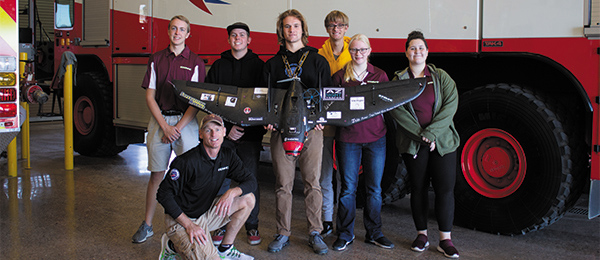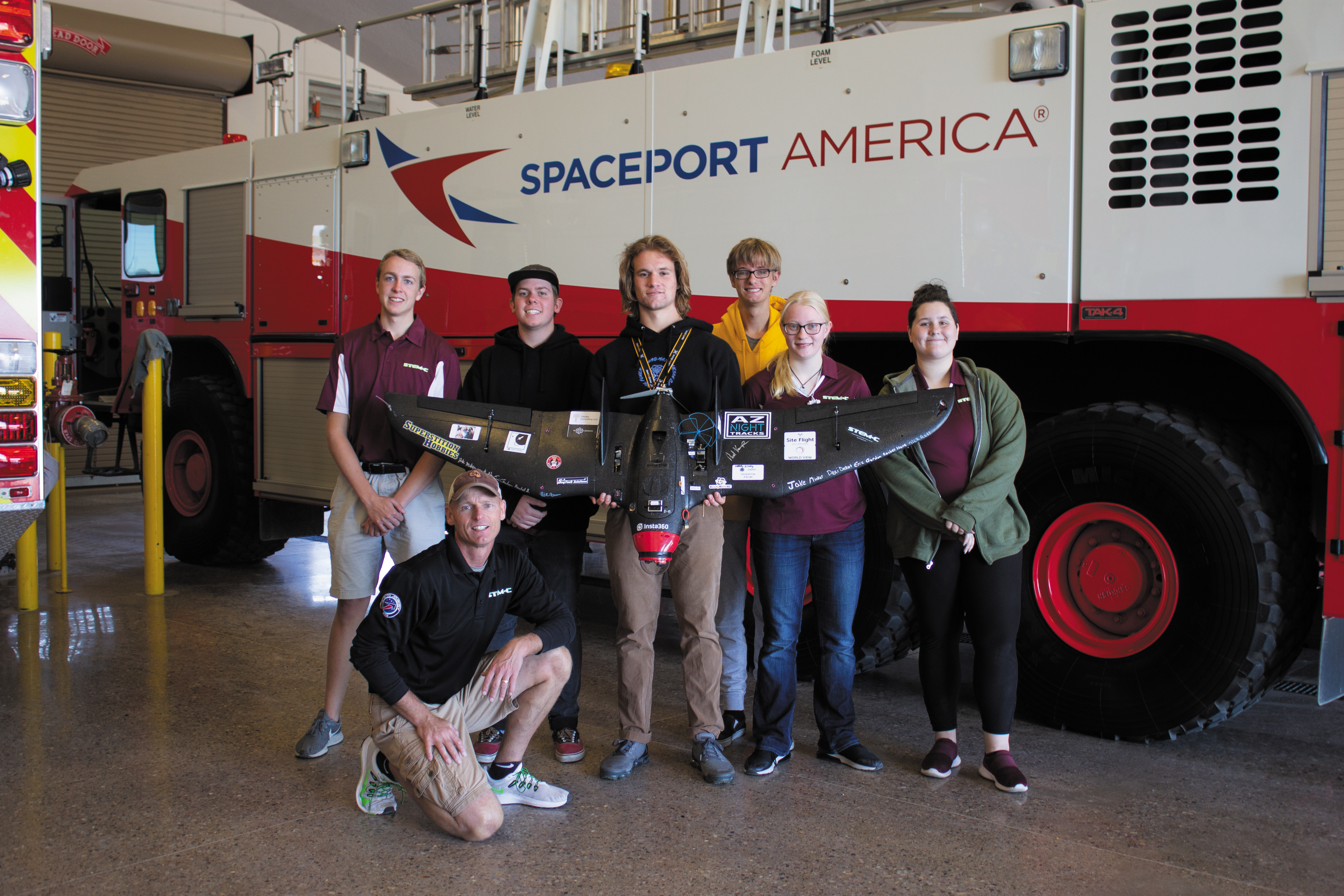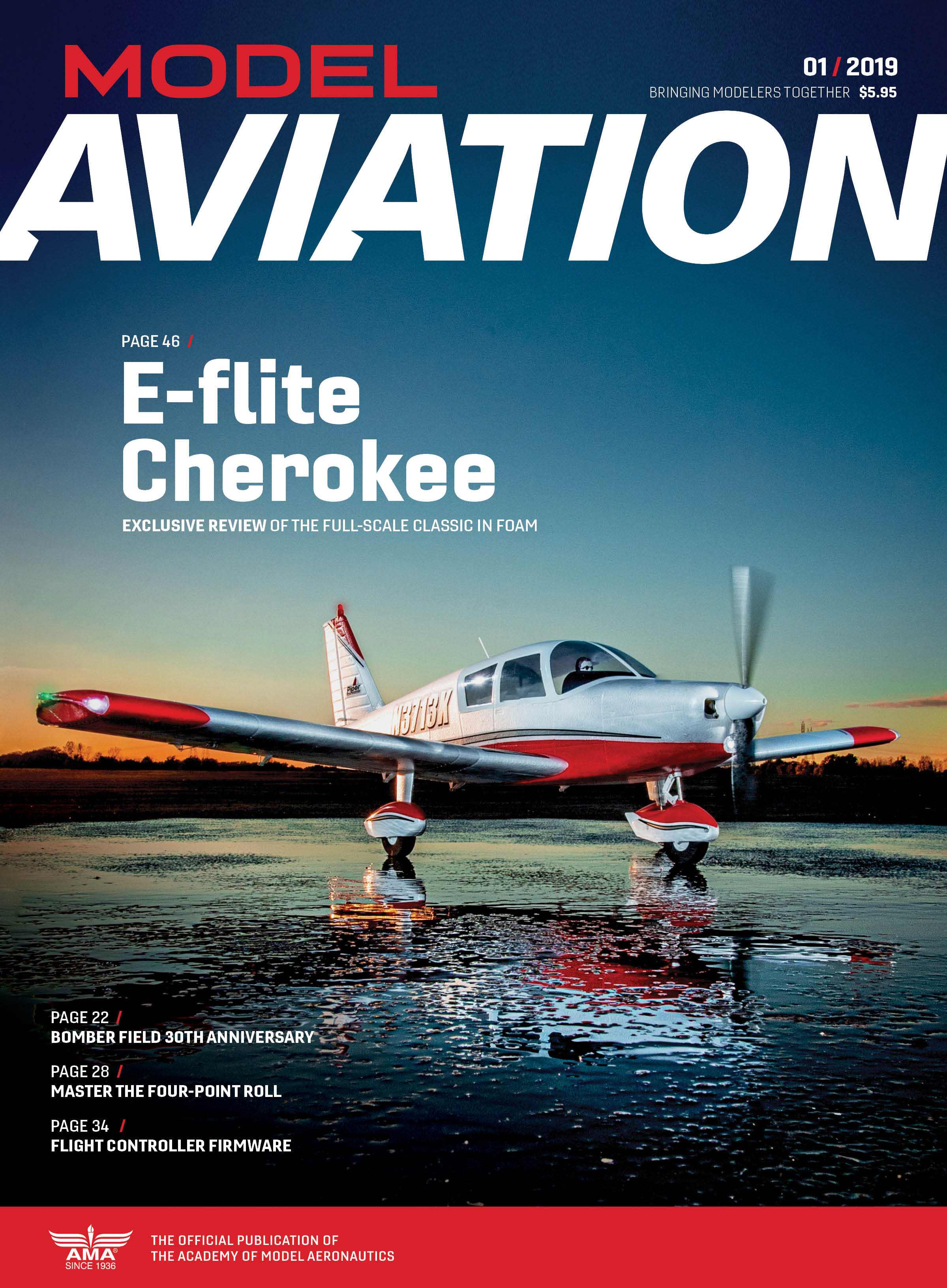AMA Members Set Guinness World Record

In The Air Membership News & Updates From AMA
As seen in the November 2020 issue of Model Aviation.
Bonus Video
FOUR AMA MEMBERS have learned that an RC flight they made in 2019 has set a world record for the highest altitude RC model aircraft flight.
AMA members Paul Kaup, Jake Minker, Eric Gordon, and Nick Ross learned in August that their flight was ratified by Guinness World Records. On October 13, 2019, they used a balloon to help an RVJet Flying Wing reach an altitude of 34,800 feet. The flight took place at Spaceport America, in Truth or Consequences, New Mexico.
"When I found out that the record was officially accepted by Guinness, I was astounded," Eric stated. "After so much work we put into this, it was amazing to hear it paid off and we officially had the record in our hands." Paul notified the team that the record was ratified on August 14, 2020.
"We had a good feeling [that] we met the specs to break the world record the day of the flight. However, we had to wait a long time for Guinness to process the data," Jake added. Also on the team were Rachel Stark and Dani Deckert, who are not AMA members.
Nick shared some background about how the team was formed. "At our grade school, Paul had started a STEM+C program. This gave me the exposure to model aircraft and introduced me to Eric and Jake. We followed Paul through middle and high school as he taught us the foundation to everything we know in regard to building and flying model aircraft. All three of us had been flying model aircraft roughly since sixth grade.
"We have been working toward this feat before there were any real parameters for a ‘highest flight of an unmanned aircraft,’ which is now to sustain an altitude for a full 60 seconds," Nick added. "Before this was in place, we had been trying to simply get an airplane to the highest altitude we could and fly it back successfully.
"During those projects, we had been unintentionally making a formula that would perform in ways we needed for an official record. This happened in the early days through the mentoring of Paul and many cycles in the trial and error process," Nick added. "After we had our airplane functioning the way we wanted, and had gained experience flying model aircraft, all we needed to do was perform when the opportunity came, and our team delivered."
"I’ve been flying remote-controlled aircraft for about 5 years now," Eric shared. "Paul originally introduced me to the remote-controlled airplanes. I started flying and eventually building my own planes and it was about that time that I heard about the new quadcopter craze everyone was talking about. Nick, Jake, and I all took it into our own hands to teach ourselves how to build and fly quadcopters. Nick and I also competed in a drone race held at Spaceport America in 2016. So, we’ve all been flying model aviation for a while now, and I think it’s safe to say we’re not going to stop any time soon."
The trio formed an aeronautics club at their high school, Richmond Burton Community High School in Richmond, Illinois. In May 2017, they, along with other students, traveled to Spaceport America to attempt to set the new world record for highest-altitude RC flight. They called this attempt Project Blackbird. Unfortunately, the Automatic Packet Reporting System failed, and the backup telemetry recorder wrote over its own memory. Only the last 20 minutes of data were recorded. Guinness would not accept the results.
The second (and successful attempt) was called StratoJourney. After the failed attempt in 2017, Paul and the high school students began preparing for another shot at the record. They decided to use a kit-built RVJet Flying Wing and modify it to be suitable for high-altitude flight. A weather balloon would carry it up to altitude.
Paul contacted the FAA and filled out the necessary paperwork to allow six teams to attempt the record. "The division of the FAA that I work with is totally supportive of what I am doing," he said.

In addition to paperwork, Paul traveled to Washington, D.C., to meet with FAA officials, wrote letters to senators, and coordinated the project with Spaceport America. He had to file an exemption request with the FAA, write the program and course content, get the aircraft certified as an experimental UAV, and create an aviation safety checklist. After roughly two years, the flight was greenlighted by the FAA.
Numerous stress tests at low altitudes soon followed, and the day of the flight finally arrived. "The model aircraft was released by burning the rope with nichrome wire with the flip of a switch on the transmitter," Jake explained.
"We achieved the goal by working as a team," Jake said. "Our team always met, planned, and worked on what needed to get done. We also worked with other teams and bounced ideas off each other.
"There was a whole list of other people that helped our team but were listed separately, and I wish they could have received recognition for the project. But most importantly, all of this would not have been possible without Paul Kaup, our mentor and founder of STEM+C."
Today, Jake, Nick, and Eric are freshmen in college. Eric is studying aeronautical management technology (Unmanned Aerial Systems) at Arizona State University; Nick is a freshman at the University of Dayton, where he’s studying mechanical engineering technology; and Jake is a certified flight instructor who will soon be attending Embry-Riddle Aeronautical University Online, with hopes of becoming an airline captain. Nick also holds an FAA Part 107 certificate.
Build a Popular Czechoslovakian Glider

AMA PLANS SERVICE houses all plans formerly sold through Model Builder magazine, Bill Northrop’s Plan Service, and the Scratch Builder’s Almanac. There are more than 18,000 plans in the collection.
Construction on the first full-scale Blanik began in 1953, with its first test-flight in 1956. The 1/5-scale version of the sailplane, the Blanik L-13, was designed by L. Houha. Plans for the 126-inch aircraft come on two sheets
You can order plans for the Blanik L-13, plans number 5811, for $24 plus shipping and handling by calling AMA Plans Service at (800) 435-9262, extension 507, via email at [email protected], or by visiting https://plans.modelaircraft.org.
AMA HISTORIAN PASSES

AN AUTHOR, longtime AMA historian, and AMA Model Aviation Hall of Fame inductee has passed away.
Norm Rosenstock, age 95, died April 24, 2020. Born in Brooklyn, New York, his first job was cutting balsa for a Brooklyn Dodger kit. He also worked for the Mite Engine Manufacturing Company, was a machinist for 30 years, a licensed A&P aircraft mechanic, built jet engines, and was a teacher for 12 years.
He began building model aircraft at age 8 and bought his first model aircraft engine in 1938. In 1940, while still a teenager, Norm and his friends founded the Mercury Mites model airplane club. Soon thereafter, he began designing models.
Norm was inducted into the AMA Model Aviation Hall of Fame in 1993, received the AMA Keeper of the Flame Award, the Howard McEntee Award, the Frank and John Zaic Memorial Award, and the Vintage Radio Control Society’s (VRCS) Walt Good Lifetime Achievement Award. He was also inducted into the VRCS Hall of Fame and was named an AMA Fellow.
His book, Tales of an Ancient Modeler, was published in 1989. He also served as the AMA historian from 1996 until his death. Read more about Norm at www.modelaircraft.org/sites/default/files/RosenstockNorm.pdf.
FLYING SITE IMPROVEMENT GRANT APPLICATIONS ACCEPTED
IT’S TIME TO START thinking about improvements that your club wants to make to its field and fill out applications for AMA’s 2021 Flying Site Improvement Grant.
The online application opened in August. The final application deadline is February 1, 2021. The grant recipients will be announced in mid-April 2021.
Since 2002, the AMA has financially supported more than 400 clubs in their site improvement efforts, with more than $500,000 awarded. The AMA and the AMA Foundation are proud of their record of giving and have upgraded the Flying Site Improvement Grant guidelines and application process for members.
The minimum amount that can awarded to a club is $100, and the maximum amount is $3,000. Clubs can apply for grants that fund up to 25% of the total project costs. Past projects have included installation or repair of GeoTextile runways, concrete or asphalt repair, drain tile installation, and more.
You can learn more at www.modelaircraft.org/site-grant.
Model Aviation Redesign Receives Award

ASSOCIATION MEDIA & PUBLISHING has selected the redesign of Model Aviation magazine for one of its annual Excel Awards.
The magazine’s redesign took the silver award for magazines with a circulation of 100,000 or more. The award was given to Beyond Definition, formerly known as Bates Creative. The redesigned magazine premiered with the January 2019 issue. The winners were announced on July 14, 2020.
Association Media & Publishing is an organization for print and digital publishers in nonprofit organizations, such as AMA.










1 comments
altitude record
Add new comment